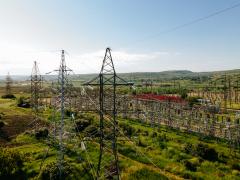There’s nothing wrong with the devices. The tablets work. The routers blink. The software loads — eventually. The real bottleneck? It’s the invisible moment after someone clicks “sync” or presses play — and nothing happens.
In South Africa, bandwidth can turn into a bottleneck disguised as progress.
That’s why some engineers are reviving something older than the cloud: edge caching. Local servers. Low-power storage units. Content kept where it’s actually needed.
Because the smartest networks now aren’t the ones reaching further — they’re the ones reaching inward.
At one Gauteng high school, a network technician recently installed a Raspberry Pi cluster running open-source caching tools. A week later:
- Video load times dropped by 70%
- Students stopped queuing in corridors for signal
- Logins stopped failing during peak class changeovers
What changed? Nothing on the fibre side. No new towers. No provider upgrades. The difference was local: the most-used content now lived right there — inside the school walls, served quietly from a server the size of a lunchbox.
Cache logic is simple: why download the same file 200 times?
In rural clinics and schools, engineers are now deploying edge caching to reduce dependency on expensive, congested or unstable upstream links.
Here’s where caching is having real impact:
- E-learning platforms (Moodle, Snapplify, Siyavula) serve the same content to multiple users — caching prevents redundant downloads.
- Healthcare systems like MomConnect benefit from offline-first syncing — reducing failed submissions and backlogs.
- Firmware and OS updates are pulled once, then distributed across the LAN.
- Video training content loads instantly from local storage — no buffering, no dropped signal.
What edge caching actually looks like on the ground
Forget data centres. Today’s edge deployments are:
- Mini PCs with SSDs and passive cooling
- Preloaded content boxes like Kolibri or RACHEL, loaded with curriculum and videos
- 12V solar-powered servers with micro-UPS units to survive afternoon power drops
- DNS redirects that reroute requests locally if the upstream connection lags or fails
In one Northern Cape maternal clinic, engineers installed a solar-fed caching unit. When LTE signal dropped — which it did daily — nurses could still access maternal health dashboards and records. The server stayed live. The service didn’t pause. No one noticed a problem.
The failure isn’t in the Wi-Fi. It’s in the layers beneath.
Caching only works when the foundation supports it. That means:
- DNS must resolve locally before checking the cloud
- Devices need fallback IPs for when the main router dies
- Cabling must be fixed — no cracked flyleads, no loose wall jacks
Why this matters now
Everyone wants EdTech to scale. Everyone wants digital health to work offline. But very few projects are budgeting for edge caching — even though it’s one of the cheapest, fastest ways to add autonomy, speed, and reliability to a deployment.
It doesn’t matter how smart your software is if it needs a handshake from Europe every time it runs.
The edge may be the workaround we’ve needed all along.
Caching isn’t new. But in a country where cloud services lag and fibre is patchy, it’s finally being recognised as the most human-centred fix we have.
Because the best networks work when no one’s watching.














